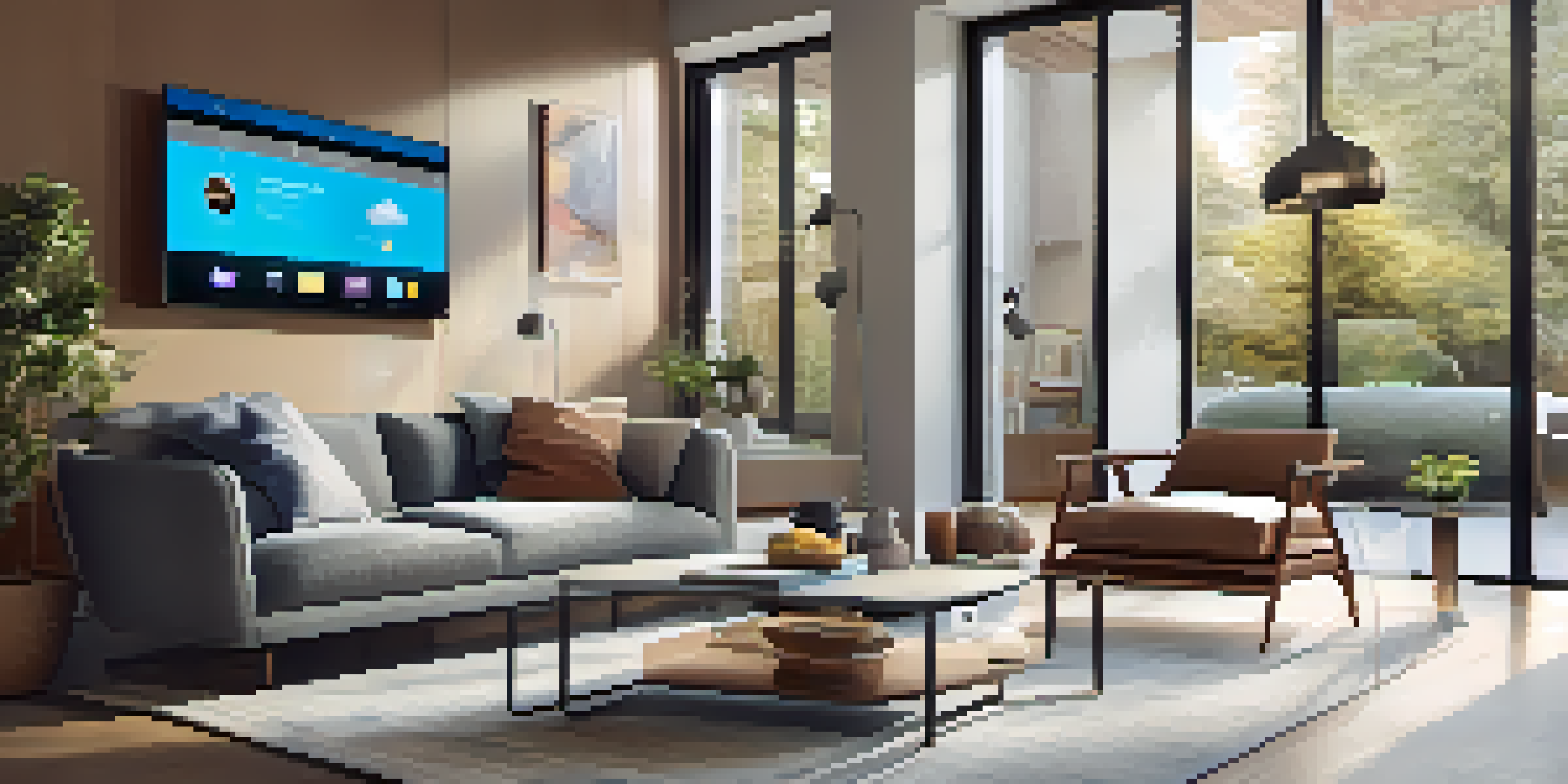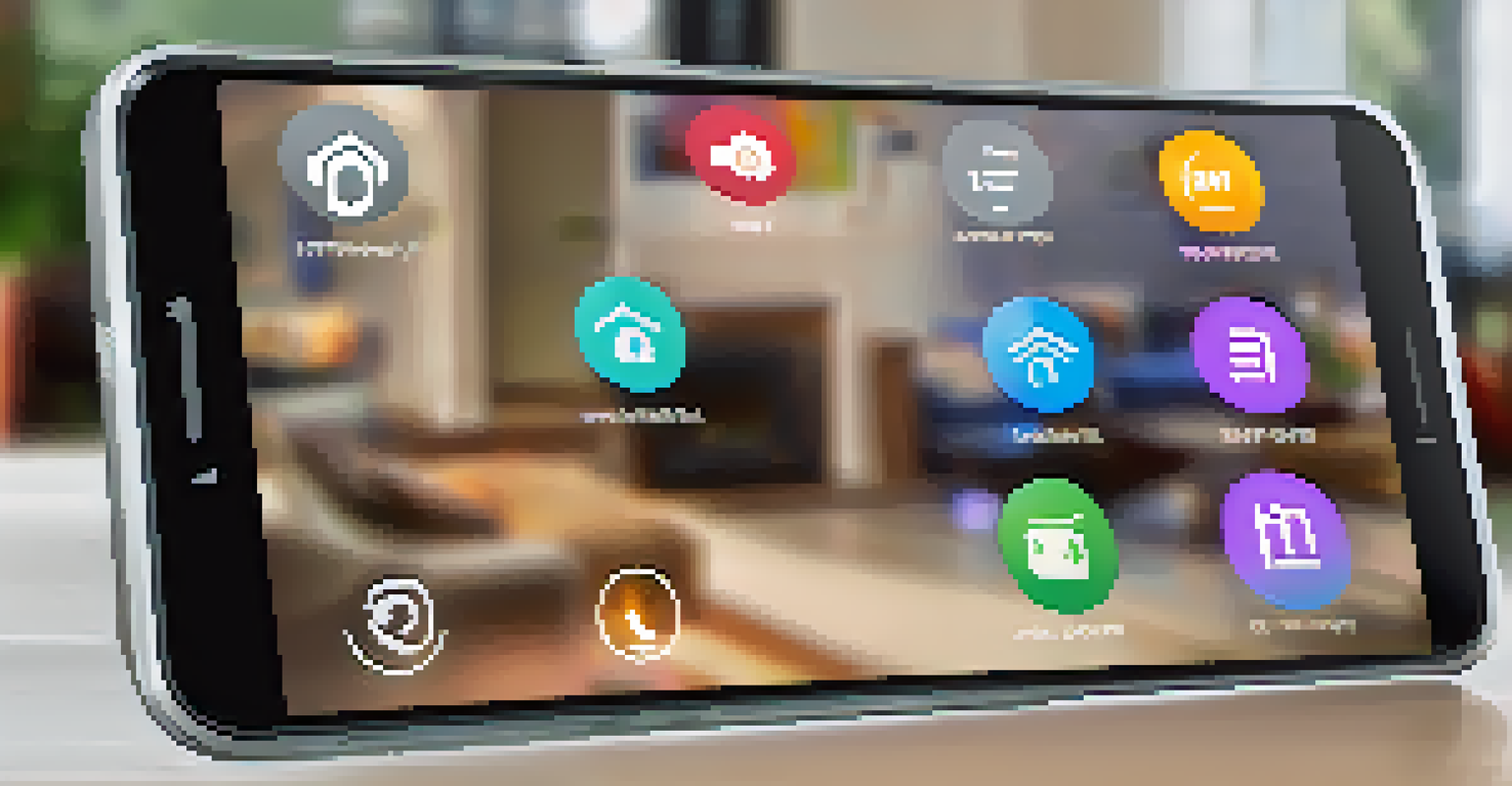Smart Home Integration: A Step-by-Step Guide

Understanding Smart Home Integration Basics
Smart home integration refers to the process of connecting various smart devices in your home to work together seamlessly. Imagine your thermostat adjusting the temperature based on your daily routine or your lights turning on as you enter a room. This interconnectedness not only enhances convenience but also maximizes energy efficiency.
The future is already here — it's just not very evenly distributed.
At its core, smart home integration relies on communication protocols like Wi-Fi, Zigbee, or Z-Wave. Each of these technologies allows devices to interact, sharing data and commands. Understanding these basics is crucial for anyone looking to create a cohesive smart home ecosystem.
As you embark on this journey, it’s important to think about your specific needs. Do you want to enhance security, improve energy efficiency, or simply enjoy the ease of voice-activated commands? Identifying your goals will help guide your integration process.
Choosing the Right Smart Home Devices
The first step in integrating your smart home is selecting the right devices. With a plethora of options available, it can be overwhelming to choose. Start by focusing on key categories such as lighting, security, and climate control, which often offer the most immediate benefits.

Consider compatibility when shopping for devices. Not all smart devices can communicate with one another, so it's wise to look for products that support the same communication protocol. For example, if you invest in Philips Hue smart bulbs, ensure your hub can support Zigbee technology.
Smart Home Integration Explained
Connecting smart devices enhances convenience and energy efficiency in your home.
Additionally, think about the brand ecosystem. Many companies offer a range of interconnected devices that work flawlessly together. Sticking to one brand can simplify setup and everyday use, minimizing the chances of technical hiccups.
Setting Up Your Smart Home Hub
A smart home hub acts as the central command center for your devices, allowing them to communicate. It's akin to a conductor leading an orchestra, ensuring that every instrument plays in harmony. Setting up your hub is typically straightforward, requiring you to follow the manufacturer’s instructions closely.
Technology is best when it brings people together.
Once your hub is powered on and connected to your home Wi-Fi, you'll need to add your devices. Most hubs provide an app that guides you through the process, from finding devices to pairing them. Make sure to have your device manuals handy, as they often include specific pairing instructions.
After successfully adding your devices, explore the app's features. Many hubs allow you to create routines or automation. For instance, you can set your lights to dim and your thermostat to lower when it's movie time, making your evenings even more enjoyable.
Creating Smart Home Routines and Automations
Once your devices are connected, it’s time to dive into creating routines and automations. Think of these as the magic spells that make your smart home truly smart. For example, you could set a morning routine that gradually brightens your lights while brewing your coffee.
Most smart home apps feature an automation section where you can customize triggers and actions. A common trigger might be your motion sensor detecting movement, prompting your security cameras to activate. This layer of functionality not only enhances convenience but also adds a layer of security.
Choosing Compatible Devices
Selecting devices that support the same communication protocol ensures seamless integration.
Don't be afraid to experiment with different routines. You might discover unique combinations that suit your lifestyle perfectly. Over time, you'll likely find new ways to tweak these automations to better fit your needs.
Integrating Voice Assistants for Control
Voice assistants like Amazon Alexa, Google Assistant, or Apple Siri can elevate your smart home experience. By integrating these systems, you gain the ability to control your devices using simple voice commands. Imagine walking into your home and saying, 'Turn on the lights,' without lifting a finger.
To get started, ensure your voice assistant is compatible with your smart devices. Most major brands offer extensive compatibility, allowing you to control various gadgets from one central point. Once set up, you can link your devices through the assistant's app, typically requiring just a few taps.
It's also fun to explore the various commands available for your devices. From setting timers to asking for weather updates, the possibilities are vast. This added layer of control makes managing your smart home intuitive and enjoyable.
Enhancing Security with Smart Devices
Security is a primary concern for many homeowners, and smart home integration can significantly bolster your safety. From smart locks to surveillance cameras, these devices can be monitored and controlled remotely, giving you peace of mind whether you're home or away. Imagine receiving an alert if someone approaches your door while you're on vacation.
Start by assessing your security needs. Smart doorbells with cameras can help you see who’s at your doorstep, while motion detectors can alert you to any unusual activity. These devices often integrate seamlessly with your existing home security systems for a comprehensive solution.
Automate Your Smart Home
Creating routines and automations allows for personalized control and enhanced functionality.
Regularly review your security settings and update passwords as needed. Keeping your smart devices secure is just as important as the physical locks on your doors. This proactive approach ensures that your home remains a safe haven.
Troubleshooting Common Smart Home Issues
Like any technology, smart home systems can sometimes encounter hiccups. Whether it's a device not responding or connectivity issues, troubleshooting is an essential skill. The first step is to ensure that all devices are powered on and connected to the same Wi-Fi network.
If you run into problems, checking for software updates can often resolve the issue. Manufacturers frequently release updates that improve performance and fix bugs. Additionally, many apps come equipped with troubleshooting guides to help you navigate common problems.

Don’t hesitate to consult online forums or the manufacturer's support page for additional help. The smart home community is vibrant and often shares tips and solutions for common challenges, making it easier to find answers.